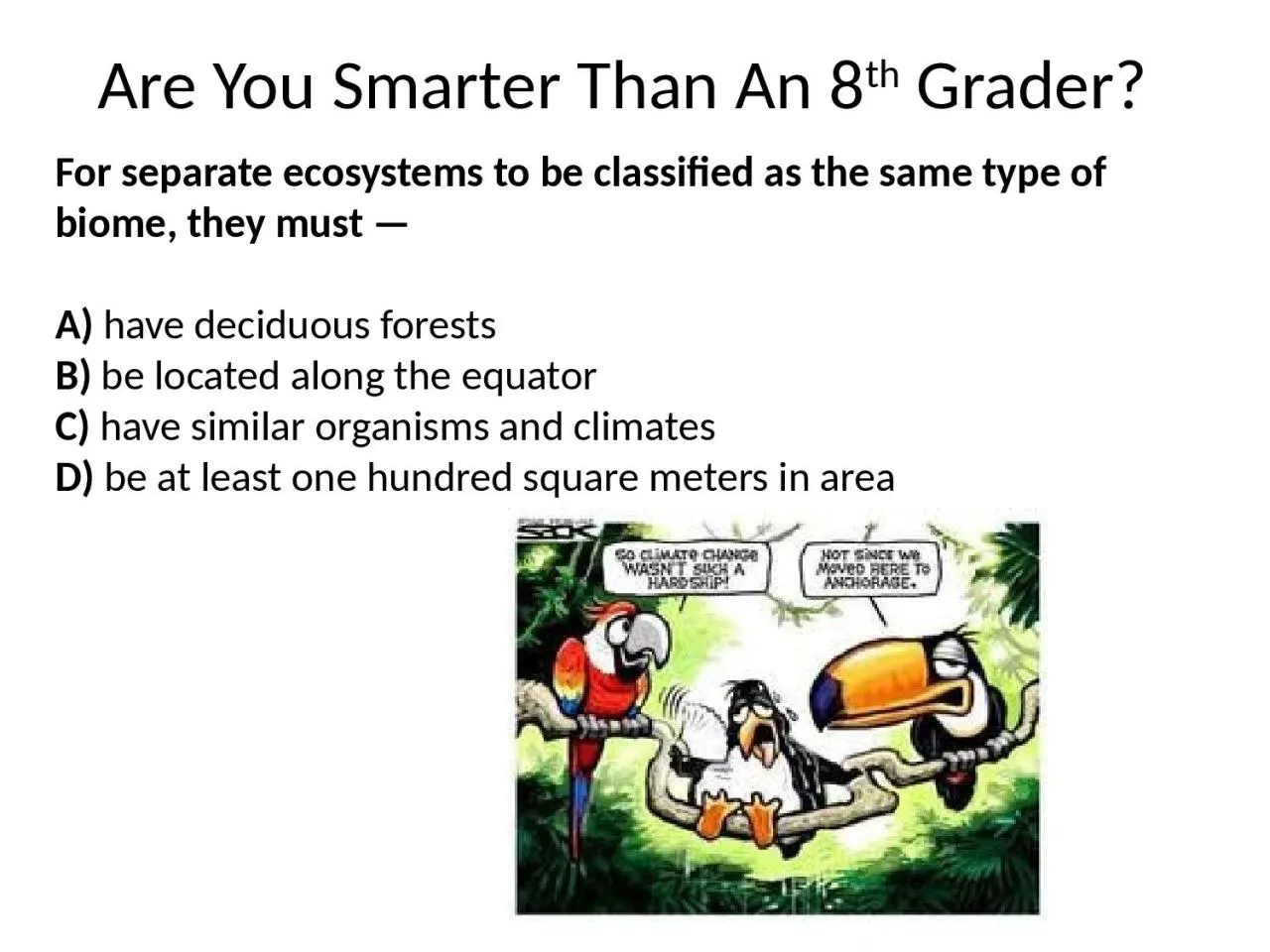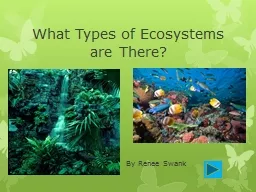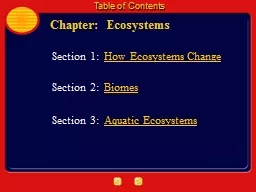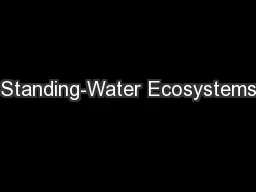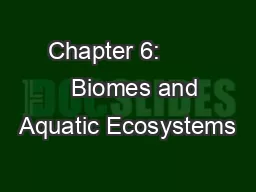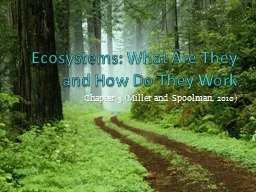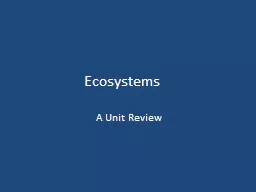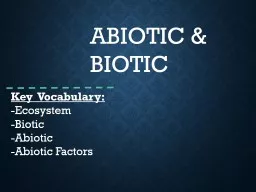PPT-For separate ecosystems to be classified as the same type of
Author : DreamyDiva | Published Date : 2022-07-28
biome they must A have deciduous forests B be located along the equator C have similar organisms and climates D be at least one hundred square meters in area
Presentation Embed Code
Download Presentation
Download Presentation The PPT/PDF document "For separate ecosystems to be classified..." is the property of its rightful owner. Permission is granted to download and print the materials on this website for personal, non-commercial use only, and to display it on your personal computer provided you do not modify the materials and that you retain all copyright notices contained in the materials. By downloading content from our website, you accept the terms of this agreement.
For separate ecosystems to be classified as the same type of: Transcript
Download Rules Of Document
"For separate ecosystems to be classified as the same type of"The content belongs to its owner. You may download and print it for personal use, without modification, and keep all copyright notices. By downloading, you agree to these terms.
Related Documents

